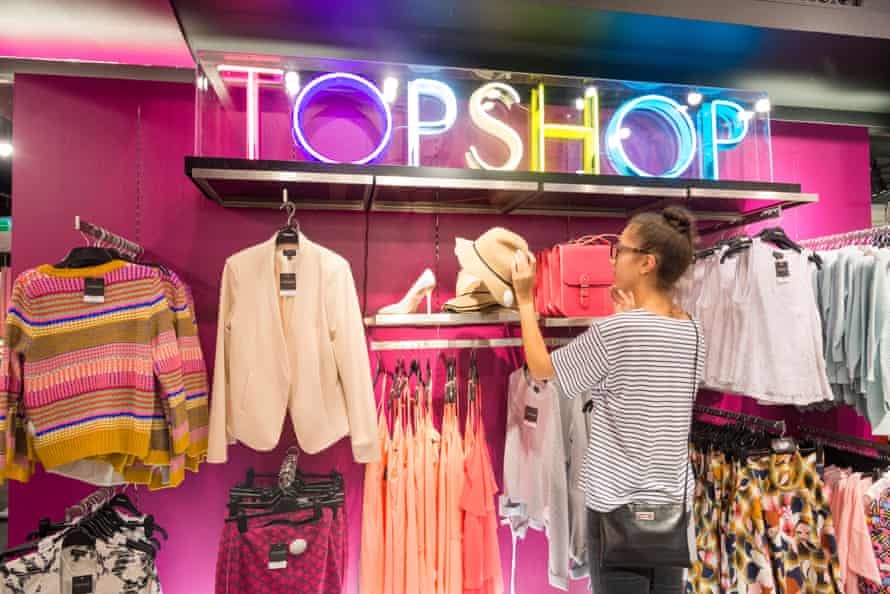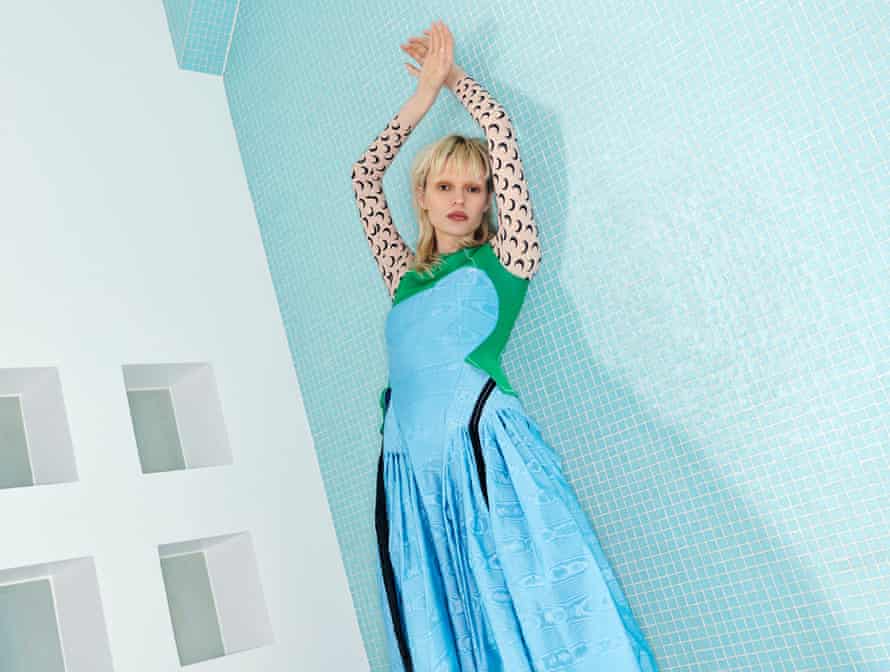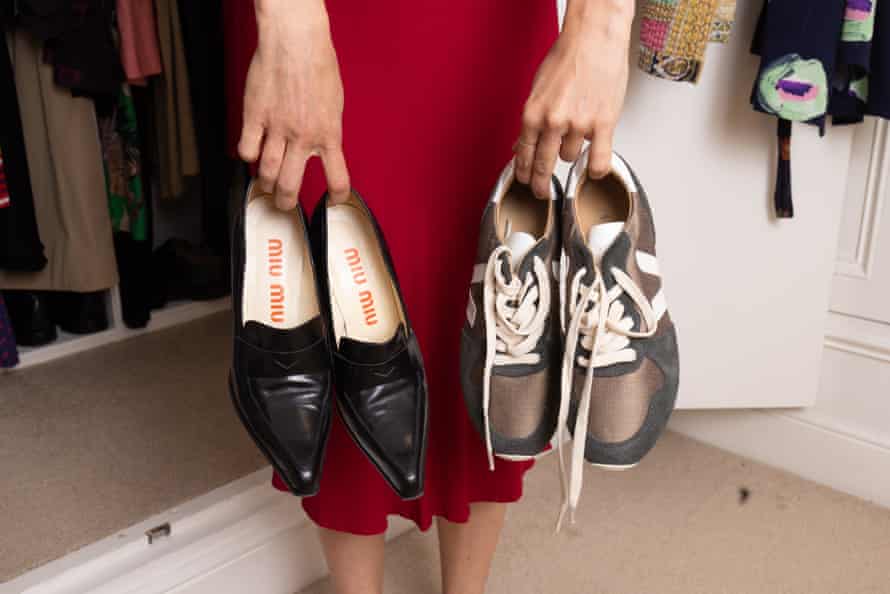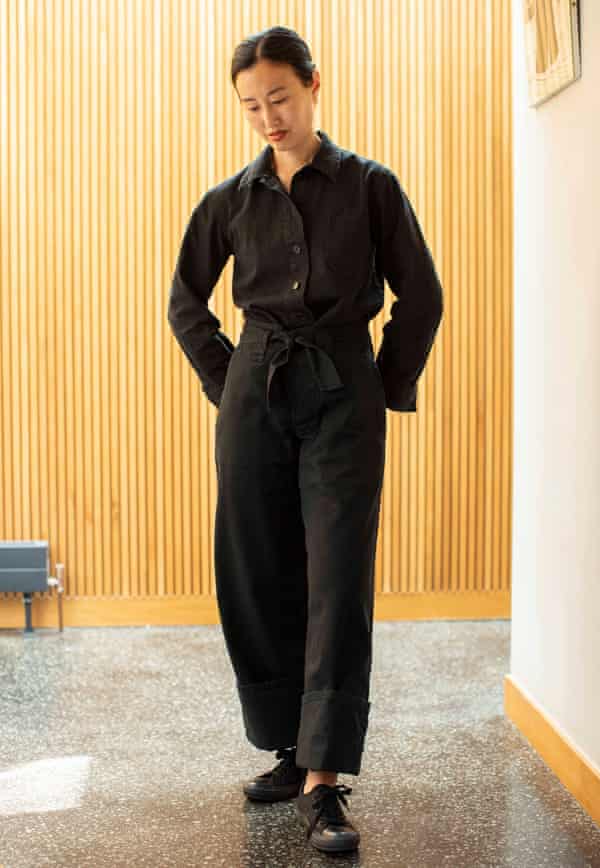It was April 2019. I was seven months pregnant and in Topshop, looking for something large in which to rehome my body.
I was wearing a maternity dress that, if you had seen me pregnant, you would have recognised – a cheap, pleated wraparound in a red floral print that expanded as I expanded. I imagined Issey Miyake, but increasingly looked more like an armchair. It had served me well, but I was determined to buy something, anything, to see me through the next few months.

I had been inside for 20 minutes, moving slowly between the rails like an icebreaker, when I started to feel breathless, then nauseous. Neither was unusual in my pregnancy, so I left the shop looking for a bench. There was no need – once outside, I suddenly felt calm. I realised it wasn’t the baby making me sick. It was the stuff – the rows and rows of stuff.
I couldn’t quite explain what had happened until I read Mark O’Connell’s 2020 book, Notes From an Apocalypse. In it, O’Connell described a similar experience at a branch of Yo! Sushi, as he watched a conveyor belt go round and round: “I thought about the volume of animal and human flesh required to keep the system going,” he wrote. Suddenly, he, too, became breathless, “experiencing a kind of abstract terror … at the delirium of commerce”.
While it was sushi that did for O’Connell, it was mass-produced dresses that did for me. Everything is commodified and nothing is sustainable. This truth overwhelmed me. Two years later, that cheap red dress is one of the last new things I own. The only clothes I buy are secondhand.

The operative word here is new, because what happened in Topshop wasn’t so much a Damascene moment as a corrective to something already in motion. I really love clothes, but I have always tended to buy used ones. As a student in Leeds, it was fashionable to dress as if in the past, so I bought my frayed Levi’s 501s in vintage shops. In my first job in journalism, in 2007, I was earning minimum wage, so I went to charity shops out of necessity. When I started earning a bit more, I upgraded to vintage from Beyond Retro, because the jeans had the high waists I so desired.
Occasionally, I felt the siren call of the high street or, when I entered fashion journalism in 2013, sample sales. But, in the end, I always return to eBay or, lately, the fashion resale site Vestiaire Collective. I don’t look for vintage, an amorphous term that usually means it costs more, and I am unsure about the marketing terms “resale” and “preloved”, which feel loaded. I prefer the term “used”, because that is what they are. And, generally speaking, used clothes, even designer ones, are good value – old Chloé lasts longer than new Zara and costs roughly the same.

It helped to create a plan that was clear, but not so drastic that I would immediately give up – I could buy new underwear, or trainers for sport, but nothing else. If I really wanted a new dress, it had to be old. The key, I realised, was to value appetite over principle, to go with the carrot, not the stick. If I cracked – which I did, twice – I would simply move on.
It helped, also, that I had a baby. I didn’t gain much weight, but my belly became a souffle and the idea of buying in-between clothes – returnitywear, if you will – bummed me out. Plus, few things prevent you from wafting around shops like having a toddler. It goes without saying that my son wears only old clothes or hand-me-downs.
Lockdown has helped, too. Over the past six months, I have had more time to look at what I already own, to get trousers re-hemmed, or just iron stuff so that it looks better. I conduct inventories, weighing up what I need (trousers, thermal vests) and what I don’t (everything else). I try to operate a one-in-one-out policy, donate to clothes banks or sell things on eBay.
It also helps to not look. Over Christmas, I wanted a yellow beret I had seen in a shop window. I have a navy beret, but this was … yellow. I thought about it a lot. Then, suddenly, I didn’t – and now it is summer. Once you look past the want and are honest about the need, desire dries up pretty fast. “Capitalism is for children,” says the author and psychotherapist Adam Phillips, in the sense that it preys upon how our desires are easily exploited. “If people are not given time to find out what they want, they tend to grab things.”
If I do land on something appealing (usually algorithmically on Instagram), I simply note the designer and look on eBay. I find that this has the useful effect of either sharpening or dulling that desire. There is a thrill in the hunt. You have to really want something to bid on it for days on end. Not everyone has the time to do this – I do it while cooking, waiting for the kettle to boil, sitting on the bus – but often I lose interest, which decides for me.
The fashion industry is one of the world’s great polluters. Initially, buying used clothes was a financial imperative, but working in fashion gave me a heightened awareness of the carbon, water and waste footprints of clothes production, as well as the working and living conditions of many of the people who make the clothes. It has become a difficult square to circle. At some point, resisting consumerism becomes the only ethical choice.

This situation is not confined to fashion. It defines our economic system. With its supply chains, developing-world factories and ceaseless creation of trends, fashion is at the sharp end of 21st-century capitalism, but it is not an outlier.
Some clothing companies have begun to modify their practices. Sustainability has shifted from buzzword to normality. This is commendable, but at times it can feel like a loophole – new stuff is still new stuff, no matter how sustainably you dress it up. On average, 40% of the clothes in European wardrobes are not worn.
It probably sounds unusual that someone who until recently had spent seven years as a fashion editor would give up new clothes, like a pusher renouncing drugs. In some ways, it is about separating church from state – I write about what people are wearing and why, rather than what they should. Fashion’s role is to reflect the world and provide visual cues about someone’s identity. Fashion should be fun, a form of self-expression, while clothes can reveal cultural trends, even sociopolitical ones. That is why we care about Trump’s Maga hat, or Billie Eilish in a corset in Vogue. Even if you don’t have an interest in what you wear, you are communicating as much.

The photographer Kate Friend is one of the best-dressed people I know, yet owns very little. “I don’t like a lot of stuff in any aspect of life,” she says. Like wearing an old mink coat while condemning fur, she believes buying any clothes, new or old, is counterproductive to sustainability, because it creates desire. “The greenest product is the one you don’t buy. By not buying, you attempt to rewire the need for new,” she says.
Friend buys two items of clothing a year and tops up underwear every six months. “Last year, I got two Acne jackets, one short and shirt-like, one very long and oversized. One or both will get worn most days a week over something very basic,” she says. If these items fulfilled certain criteria (“I have to be sure I’ll wear it weekly, if not daily, and it has to be adaptable to all sorts of situations”), she will wear them until they fall apart.
Her mindset is driven by her work as a nature photographer. “I like to wear uniform things that I can move around in and are easy to pack,” she says. “And if spending time among plants or landscapes informs what we really ‘need’, it definitely isn’t a ton of clothes.”

Of course, there is a difference between not buying things and not being able to. Rebecca May Johnson, an Essex-based writer and academic, has bought one thing so far this year. She spends most of her disposable income on her allotment. When she has money for clothes, she prefers to buy from Old Town in Holt, Norfolk, which “makes clothes to order (not to measure), so there is no waste, and the clothes are sent to you after six weeks. They last a long time and are beautifully made.” The clothes are not cheap, but they “really suit how I live and feel in my body”, she says.
Johnson says this is simply her choice. “I do not attribute any moral value to buying or not buying things. People take their pleasure where they can in the ways they can, especially if choices are limited by income and working conditions,” she says. “Buying nice stuff is nice, nothing more.”
I told my Topshop story to Patrick Fagan, a behavioural psychologist at Goldsmiths, University of London. “Were you overwhelmed by the futility and nihilism of consumerism? I’d say so,” he says, pointing me towards “a change of thinking dating back to at least the 1960s that says that we have become consumers, rather than producers, and have less control over our lives”. This, he says, has created a hole that consumerism can’t fill.
“There is a subconscious rule of thumb that if something is new, it must be good, and in some cases that’s true,” says Fagan. “But it’s also about having autonomy – buying new things feeds into that.” Make something new, but familiar, and people will buy it.
There are times when I have “failed”. The first was when I returned to work from maternity leave during lockdown. I wasn’t at home and had only a few breastfeeding T-shirts with me, so I bought a gaudy blue silk shirt, which was, on reflection, a panic-buy “Zoom” shirt. (I rarely wear it.) The second time was late last summer, when I was caring for my ill mother during the lockdown. Shopping was impossible, but also, because of mum, unthinkable.

On one particularly dark day, as she lay dying upstairs, I went online and bought a coat. It was oversized in navy wool, not unlike a blanket. I don’t know why I bought it – I imagine now it was some sort of salve – but when it arrived, wrapped in crisp white paper, with me knowing my mother would be dead by the time it was cold enough to wear it, I could barely look at it. Then, and truly then, the fantasy of easy acquisition was exposed for all its emptiness.
Rather than buying new ones, I wore her clothes to the funeral (they are nice and we were the same size). This is quite common, says Fagan: “When people are faced with mortality, they want to hold on to nostalgic things with meaning.” By wearing her clothes, I felt connected to her.
Paola Locati is a fashion consultant who has worked in the industry for more than 20 years, yet she has barely bought anything new in five. Like me, it was a perfect storm of personal events – turning 50, putting on weight, her mother dying – that changed her outlook. “You think: ah, I’ll buy clothes in the hope of losing weight, but it’s a false economy,” she says.
Now, Locati follows a few arbitrary rules. She buys clothes only to replace ones she has worn out. She repurposes clothes she already owns. And she tries to wear the clothes she inherited from her late mother.
I know I am still scratching a consumer itch, but, in cutting out the new, I value what I have already. As Samuel Delany wrote in his 1979 memoir Heavenly Breakfast: “It’s nice to have most of the people knocking around in something once beautiful, with wear grown comfortable.”
from Lifestyle | The Guardian https://ift.tt/3vL1sdd
via IFTTT

comment 0 Comment
more_vert